After a false start two years ago, Apple has released a new set of in-ear buds that are finally worth trading up to from the company's own pack-in models and which may well compete against third-party earbuds that are significantly above its price class. We explain why.
Of all the iPod accessory markets Apple has dipped into since launch over seven years ago, the company has ironically been the most conservative around personal audio. It wasn't until 2005 that Apple offered anything more than a replacement set for the (necessarily) cheap earbuds that have always come with the company's portable music players.
These buds, the first iPod In-Ear Headphones, have commonly been regarded as outright flops. They only cost $39, but it was painfully obvious that this was Apple's first attempt and that it was built to a price. The flush, almost conical shape was very difficult to keep in one's ear even in ideal conditions, and most of the improvement in audio quality simply came from moving the sound deeper into your ear opening.
As such, there was almost no incentive to buy Apple's own take on higher-end earbuds; unless you just had to have the lanyard set for the early iPod nano, you were better-off buying something in a similar price range or slightly higher that fit better and had more than just a passive audio enhancement. And of course, in the era of iPhone and iPod touch, the absence of either a microphone or a remote was virtually a deal breaker.
Comfort and fit options
The new earbuds are, in a sense, an admission by Apple that the original design didn't work: the new design has a right-angled shape that fits much more directly.
To say it's an improvement in stability would be an understatement. The new buds can be inserted deeply enough into the ear passage that there's little if any room for them to slip out, although they do require a degree of "massaging" (really, wiggling) to get a perfect fit. Running with the In-Ear set didn't jostle it out of place or create any real doubts.
The silicone ear tips have also changed somewhat, though not by much: they're now a set of clear, very thin covers instead of the earlier solid gray models. They look nicer, but they're importantly very soft and comfortable on the ears. We've used a set of Shure E2Cs in the past that were certainly comfortable most of the time but were bulky enough to potentially cause discomfort over a long stretch of listening. We wore Apple's earbuds for hours and not once felt any pain or signs they'd been in place for too long.
It's also noteworthy that listeners aren't forced to wear the earphones a particular way: they remained snug both inserted directly and hooked over the ears, although the cords were more likely to come loose than on earbuds intended to be worn this way, as with the Shures.
Like most earphone makers, Apple includes both small and large eartips in the box, and given the comfort of the mediums should easily accommodate unusual ear sizes. For some reason, however, Apple has chosen to package them in a "pill" that opens at either end rather than simply stuffing them in a bag. It's a nice touch, but it's utterly excessive: most iPhone and iPod owners don't share their earbuds with others that also happen to have different ear sizes and don't really need an elaborate container as a result.
By far the most heavily trumpeted aspect of the new iPod In-Ear Headphones is their dual-driver output. While sounding slightly exotic, the effect of this switch really amounts to the same as having separate tweeters and woofers in speakers. It separates the high- and low-range frequencies into more distinct output and prevents sound from seeming muddled by mixing too many frequencies into one single driver.
That's largely how it pans out in practice. Compared to the single-driver E2Cs, which are known to be slightly bass-heavy, Apple's buds have more clearly evident treble and slightly more detailed as well. In DJ Shadow's "Midnight in a Perfect World," for example, the hisses and pops from the sample records are easier to detect and are more likely to be heard even as the beats first take full effect. Classical music and other treble-rich audio sounds good as well, though spoken dialogue may sound slightly brittle.
Those who listen to electronic and urban music should be happy, and not necessarily in the way they think: the earphones still have satisfying bass response, but they're tangibly more neutral than the Shures and certainly more so than punchy earbuds like V-MODA's Vibe line. The notion that absolute neutrality is necessary is something of a myth — many earbuds need extra bass to make up for weaker portable amps — but Apple appears to get reasonably close to the sweet spot between too much and not enough bass, especially for the price.
Noise isolation is inherent to in-ear buds like these and certainly muted most sound, though not quite as absolutely as full-fledged in-canal models; loud footsteps and other more moderate noises occasionally creep in. This could be a good thing for urbanites keen to listen for oncoming cars, or a bad thing for audio purists.
One caveat exists for those unused to in-ear buds: a certain amount of cleaning is necessary, as the tips and grilles will gradually accumulate wax. It's not difficult, but it's necessary. Apple thankfully has an improvement here too. Instead of throwaway stick-on caps to protect the drivers, the company uses metal caps. These are both more durable and can also be washed to be used again. The one worry is if users exhaust both pairs of caps included in the box; there's no publicized replacements, so owners may have to shell out another $79 if both sets are lost.
The mic, remote and iPhone compatibility
Apple's 2008 In-Ears mark the company's first-ever microphone accessory for iPods, and this by itself may be the single most important addition to the iPod line in recent memory. It's finally possible to record voice memos on the fourth-generation iPod nano and the second-generation iPod classic. second-generation iPod touch owners now also have support for voice-aware software like Google Mobile App or even voice-over-Internet calling suites like Truphone. It's a game changer, and that Apple hasn't chosen to restrict the functionality to individual app types is a boon for iPod touch owners who want some semblance of the iPhone experience.
Unfortunately, support hasn't extended back to earlier iPods. The first-runs of the iPod classic and iPod touch both won't recognize the mic at all, and older iPods with entirely different firmware won't support it either. Apple has never publicly explained why this is the case, though we suspect Occam's Razor is in effect. The firm wants to push owners to upgrade their devices, and the time spent retrofitting the earlier hardware would only delay some purchases. The possibility also exists that the earlier iPods may lack some necessary circuitry, but nothing appears to have been confirmed on this front.
As for sound quality, there were few complaints. It's not meant for recording podcasts, and quality is relatively basic. But with such a small footprint, it's hard to complain and it's in fact fairly free of distortion or excessive sensitivity. Only louder background noises like nearby cars registered during testing outdoors.
The remote function also embodies this ultra-minimal design. It's obviously lifted almost directly from the iPhone and works just as well: you click once to play, pause, answer or end calls, twice to skip forward, and three times to skip back. About the only additions are volume controls that respond a similar way. It's strange but also very intuitive, and an absolute lifesaver for cold weather, subways, or other areas where temperature and security could actually make it dangerous to pull out an iPod to change tracks.
Officially, Apple only supports iPods, but here's where the company delivers a pleasant surprise: all iPhones support the mic and most of the remote functions out of the box. We tested this ourselves, and it delivered good call quality. The only functionality broken is the volume control, and this is less of an issue given the dedicated buttons for this on the iPhone itself. You don't really lose functionality over Apple's default earbuds, and so the new In-Ear Headphones could well be a step-up over the bundled headset for those who want higher quality.
About the only quirk for the mic/remote combo is its placement. Rather than putting it on the main cord, Apple places the remote on the cord for the right earbud. It's understandable from a voice perspective, since it brings the mic closer to your mouth, but it's not intuitive in the way a remote sitting on your chest might be.
The one misgiving we have for the new earbuds are their useful lifespan. Apple is a fan of small, subtle earbuds, but as a result has more fragile-feeling buds and thinner cables. They're well put together and convey a sense of quality, but they aren't as sturdy as Shure's usual cabling or those of other more audiophile-grade earpieces.
That could potentially lead to damage over time; while not a serious complaint, we can imagine some users having to seek replacements if the cords fray or the earbuds get crushed. Treat them with care and they should last as long as any other set, but be aware they aren't meant to handle a large amount of abuse.
The iPod In-Ear Headphones in review
We've heard that Apple is "cheating" with its new in-ear design, as it's not entirely the company's own baby: a third-party headphone maker is believed to have been heavily involved in creating the audio system and mostly relied on Apple for the cosmetics.
However true that might be, it's probably a wise strategy in hindsight and is what leads to a very strong recommendation from us: better to borrow from the best than to make a poor original. The new models are actually very pleasing to listen to, and that second driver has much to do with it. It's enough to seriously consider abandoning even other earbuds in the class if you're missing out on the microphone and remote functions, particularly if you live north of Apple's home state of California and have to risk freezing skin to change tracks.
And more importantly, the price is right. A quick comparison puts Apple's $79 offering about $20 lower than the Shure SE110s and a similar amount above Sony's MDR-EX85s, both of which have single drivers and are more prone to indistinct sounds as a result. Apple's claim of almost revolutionizing earbuds is something of a misnomer: the sound isn't so good that it would blow away a normally high-end dual driver setup. All the same, the In-Ears are sufficiently inexpensive that they can make far more economic sense than springing for many $100 or $120 sets.
Time will tell if there are any long-term problems that will surface with the earphones, whether it's the cord or cleaning the caps, but for now it's hard not to recommend them to iPhone and modern iPod users alike. They sound good, the in-line functionality works well, and of course they fit in with Apple's design aesthetic. If you're looking to upgrade from what Apple gave you in your iPod box, you finally have a real alternative from the electronics giant itself.
Rating 4.5 out of 5
Pros:
Well-balanaced yet sufficiently bass-rich sound
Inexpensive for the quality
Comfortable for long periods
Voice memos, VoIP now an option for newer iPods
iPhone support
Good (though not great) microphone input
Simple but effective remote
Cons:
Thin cables and small earpieces
No support for first-generation iPod classic or iPod touch models
Volume doesn't work (yet) on iPhones
Remote placed in a slightly unusual location
 Katie Marsal
Katie Marsal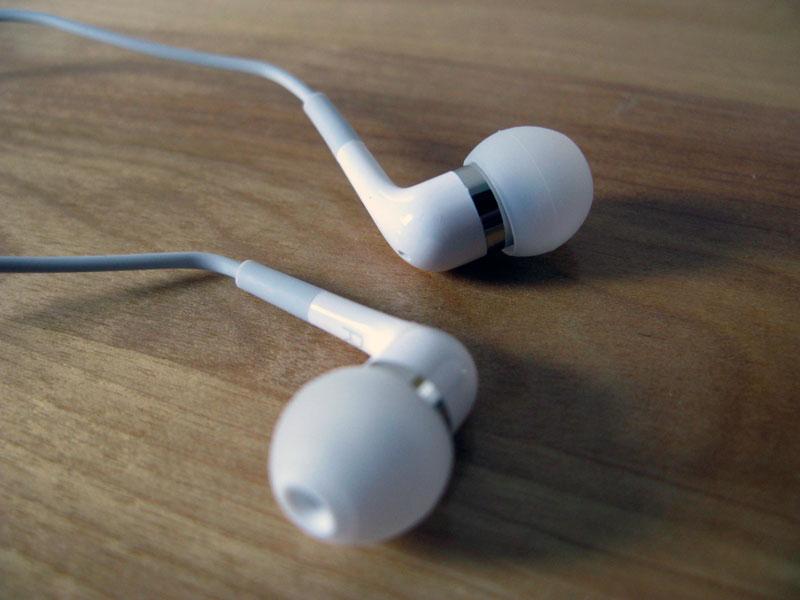
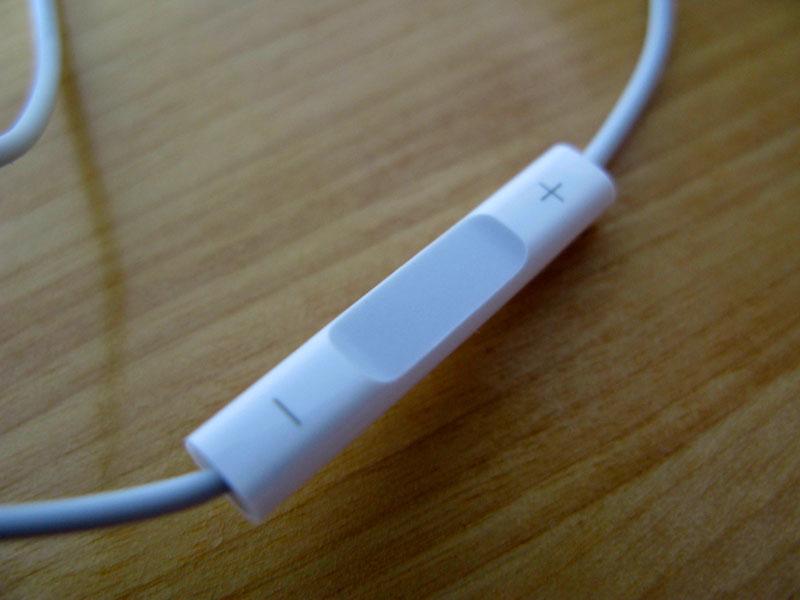








-m.jpg)






 Wesley Hilliard
Wesley Hilliard
 Malcolm Owen
Malcolm Owen
 Andrew Orr
Andrew Orr
 William Gallagher
William Gallagher
 Sponsored Content
Sponsored Content
 Christine McKee
Christine McKee
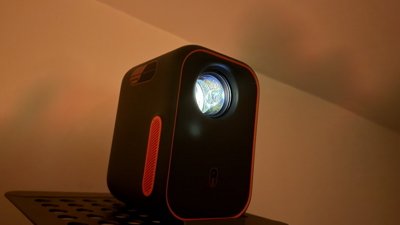
 Thomas Sibilly
Thomas Sibilly
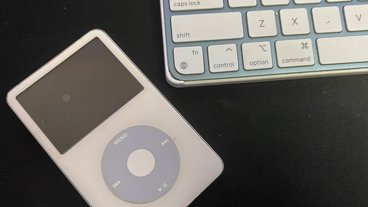
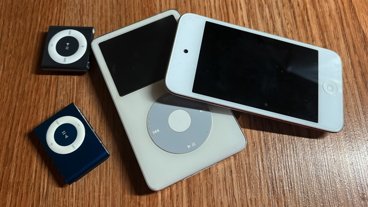





55 Comments
Ok so when are they going to be in store? I've been visiting my local (Toronto) Apple Store everyday for the past a week or so and they are not in store yet!!!
Still taken aback that didn't make them "FULLY" compatible with the iPhone 3G at least. YES, I know they are partially compatible. This is such an Apple thing to do. One of the best companies in the world manage to do things like this that are so dumb it's shocking.
Steve, you get a bag of coal for X-MAS
Anyone makes any excuses for them, or tires to defend Apple in any way shape or form on this one get an internet-slap! ZIP IT!
So this it a "Pro", yet....
YET? What are the waiting for, the parting of the seas at Macworld? Come on. If the volume controls don't work on the iPhone it's not supported - end of story. In fact if you go to the online Apple store you'll see there's no iPhones in the supported models images at the bottom, cause they are not supported. Imagine if this was a Zune, you would have slated them to piece over this. I'm sorry but I find it embarrassing to hear you say it's supported.
Cars are "flying around the world" on "a lot liter of water", it's just that the engines aren't supported yet.
iPhone: From my understanding, the volume aspect requires that receiving input socket have all 4 segments/connectors. The iPhone only has 3. (forgive the layman wording). So it will take a complete change-out of the input socket to begin solving the issue. I bet the next iPhone edition that comes out will have it. The bigger question I have... from my understanding... the new MacBook (Pros) can use these as complete mic/headphone set. Has anyone tried this out? doe the controls work as well??? This would a good thing to know and could tip the scales for some.Thanks for the article btw.
The one misgiving we have for the new earbuds are their useful lifespan.
[ View this article at AppleInsider.com ]
The trouble with my last iPhone earbuds was that the connection between the microphone/remote and the earbuds didn't tidn't withstand much, and I soon had to buy a new pair. It looks like it's as fragile here..